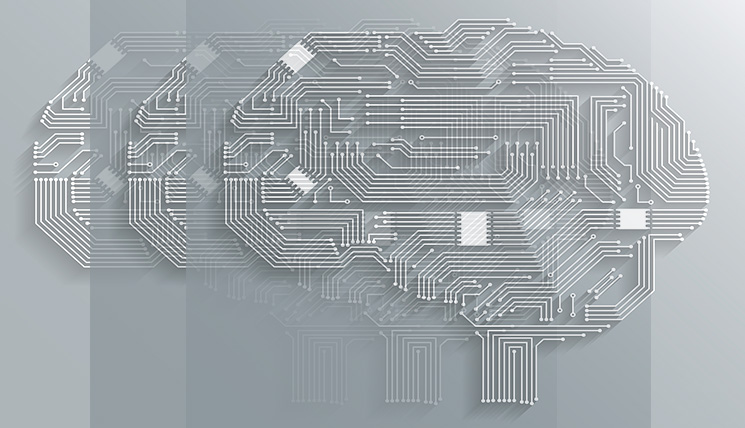Indirect immunofluorescence diagnostics is one of EUROIMMUN’s long-standing areas of expertise, at least since the introduction of the then ground-breaking BIOCHIP technology in 1983. In the development of new test systems and automation solutions we focus on the current needs of diagnostic laboratories of all sample throughputs. We aim to enable laboratories to process our test systems securely, economically and time-efficiently for fast and reliable analyses.

We are pleased that we had the opportunity to interview Dr. med. Matthias Orth, the medical director of laboratory medicine at Marienhospital Stuttgart and a proven expert in the field, who gave us an exciting insight into the practical application of our automation solutions for IIFT diagnostics. The Marienhospital is one of the largest hospitals in Stuttgart and encompasses 791 beds, 19 specialised clinics and 18 interdisciplinary centres. Dr. med. Matthias Orth is chairman of the laboratory management section of the German Society for Clinical Chemistry and Laboratory Medicine (DGKL), a member of the board of the Professional Association of German Laboratory Physicians (BDL) and is well connected in the field of laboratory diagnostics. Furthermore, he is active in various professional associations such as the American Association for Clinical Chemistry (AACC).
Dr. Orth, thank you for taking the time to give us an insight into your IIFT workflow. As we have seen, the Marienhospital is a large hospital where IIFT diagnostics are employed frequently. First, we would like to get an overview. Could you tell us about your IIFT automation?
There are, of course, many different ways to carry out high-quality diagnostics. Automation is an important component of diagnostics. The respective concept should be tailored to the size of the laboratory, i.e. its sample throughput. As we are directly connected to the hospital, we receive more samples from patients who are severely ill than the average rheumatological practice, where patients also present with problems or illnesses that are less severe and might not require diagnostics. This means that their positive rate in disease diagnostics is lower than ours. Additionally, we also have to get results faster because of the acuteness of the diseases, which is why our worklists tend to be shorter. Furthermore, we do not have the possibility to close during holiday season. We therefore rely on automated systems that are easy to operate and run efficiently.
Which devices do you use in your laboratory for IIFT processing and what role do they play in your workflow in terms of assay diversity and sample throughput?
Overall, we have established a combination of EUROLabOffice 4.0 and EUROPattern Microscope Live for our IIFT automation. In March 2022 we consciously chose the EUROPattern Microscope Live in order to implement standardised and reliable diagnostics. It is critical for us to establish a consistent interpretation process so that we can always process and evaluate diagnostic tests with the same high quality, independently of holidays or other influencing factors. This is exactly what we achieve with the automated classification by the EUROPattern Classifier. As regards the diagnostic range, our IIFT applications include products for ANA diagnostics and ANCA determination, tests for the detection of antibodies against dsDNA using Crithidia luciliae flagellates or against mitochondria and endomysium as well as several products for neurological diagnostics. Our focus is to always deliver the same reliable result for a patient, no matter the type of investigation. Every result should be established on the same diagnostic basis. Targeted standardisation of the corresponding processes is best achieved by means of automation.
How important are the result proposals of the EUROPattern Microscope Live for this?
Considering IIFT for autoimmune diagnostics, it still occurs today that some laboratories only recognise a few patterns in ANA diagnostics and send corresponding results to the sender, while specialised laboratories can identify more patterns in comparison. But all laboratories should provide the same quality. Methods such as deep learning (see information box for note from EUROIMMUN) are important to achieve better or more accurate results using automated classification. No doctor is able to view enough patterns/IIFT images during their career to be able to compete with a computer-aided system. In conventional methods there are external factors that can influence the interpretation, such as another external light source or an unsuitable area of the tissue being used for evaluation. The EUROPattern Microscope Live, in contrast, automatically delivers a classified image taken under the same conditions every time. That image can be used for evaluation or to seek advice from colleagues. This allows you to evaluate much more objectively.
Information
IIFT pattern recognition using the EUROPattern Classifier – what are deep convolutional neural networks (DCNN)?
Whether it’s quickly unlocking the phone via face recognition or using a translation app with voice control: We encounter simple forms of artificial neural networks, which are based on biological models, nearly every day, especially in the areas of image and audio data processing and machine learning. Using models, the machine “learns” to identify and classify specific features and patterns in the training data and to then apply this to new information that becomes available. Unlabelled test datasets are used for a final verification of the learning result. The artificial networks are organised into layers, with each layer further refining the result. The information is first received by the input layer, then goes through a defined number of additional layers (hidden layers) before reaching the output layer, which is when the final result is produced. The interaction of specific assessments of the incoming information by the individual layers allows the evaluation of complex data. A convolutional neural network (CNN)convolutional neural network (CNN) with a large number of hidden layers is known as a deep convolutional neural network (DCNN), which forms the foundation of deep learning and EUROIMMUN’s automated IIFT pattern recognition.
What role does the patient’s medical history play for evaluation?
The patterns to be evaluated should be clearly recognisable from the IIFT image. If they are not, immunoblots, ELISAs or other methods should be used as additional diagnostic methods to receive a reliable result. The evaluator should not be biased due to the medical history but should instead describe accurately what is displayed in the image. Still, the overview of the patient’s history in EUROLabOffice 4.0 is also very useful for us in many situations, such as to verify whether the results of follow-up investigations are plausible. If a patient previously had a high positive result and it is suddenly negative, that should be clarified. On the other hand, if there is a rare pattern and a previous sample has already been confirmed comprehensibly, the classification of the IIFT image becomes easier and we can avoid the repetition of time-consuming, expensive confirmatory tests.
Are EUROPattern Microscope Live images only used for evaluation?
The images provide a basis for discussion as the IIFT image can also be reviewed with several colleagues in order to choose the best therapy for the patient affected. Even the head of the department can be wrong, so that consultations are useful for us, especially with ANCA patterns.
In the past, conventional devices occasionally delivered ambiguous image data for individual samples. While some colleagues tended to still evaluate them, others declared 80% of samples “non-evaluable”. That is not very effective, of course. The EUROPattern Microscope Live provides us with a result proposal as orientation as well as the possibility for fast exchange using the digital image material so that we can get result directly. This has streamlined our implementation.
What has changed with the introduction of the automated system?
One obvious change is the objective proposal. The automated classification and the result proposal of the EUROPattern Microscope Live allow to achieve a high level of standardisation and results that are independent from external influencing factors. The classifier works particularly well for ANA diagnostics. In ANCA diagnostics we observed a certain learning process, as we initially saw that the titers were a little too high. In the past we often had to repeat tests and to redo many processes during ANCA determination, as a low ANA titer can lead to an unclear result. However, since the classifier’s proposals have always proven to be right, we now have a lot of confidence in them, which has significantly decreased the number of repeater samples. For example, we now often trust negative results without feeling the need to experiment more. The laboratory technicians are happy to not have to go find and process samples again and the doctors in the respective unit are glad when they receive a result quickly based on which they can initiate the patient’s treatment.
All in all, the images and the high level of standardisation improve the result quality significantly and additional security is provided through barcode recognition and verification. Overall, automation has massively improved our diagnostics. We have also come to really appreciate the consistent quality of the sections on the EUROIMMUN BIOCHIPs.
What does the future hold for IIFT?
This is a good question, but hard to answer spontaneously. Different aspects must be considered here, including the varied diagnostic demands in practical application. Many patients with rheumatic diseases are treated in and admitted to our hospital. Simple monospecific screening bears the risk of overlooking something, which leads me to believe that computer-aided microscopy is an important diagnostic method to find everything that is there. This is why we are constantly providing training in the area of IIFT. Automated image acquisition represents a huge leap in this regard, as it means we can support example cases with our own images. In practice this means that we are evaluating worklists on screen together with our students, which is also a fun experience.
Thank you very much for your time!

